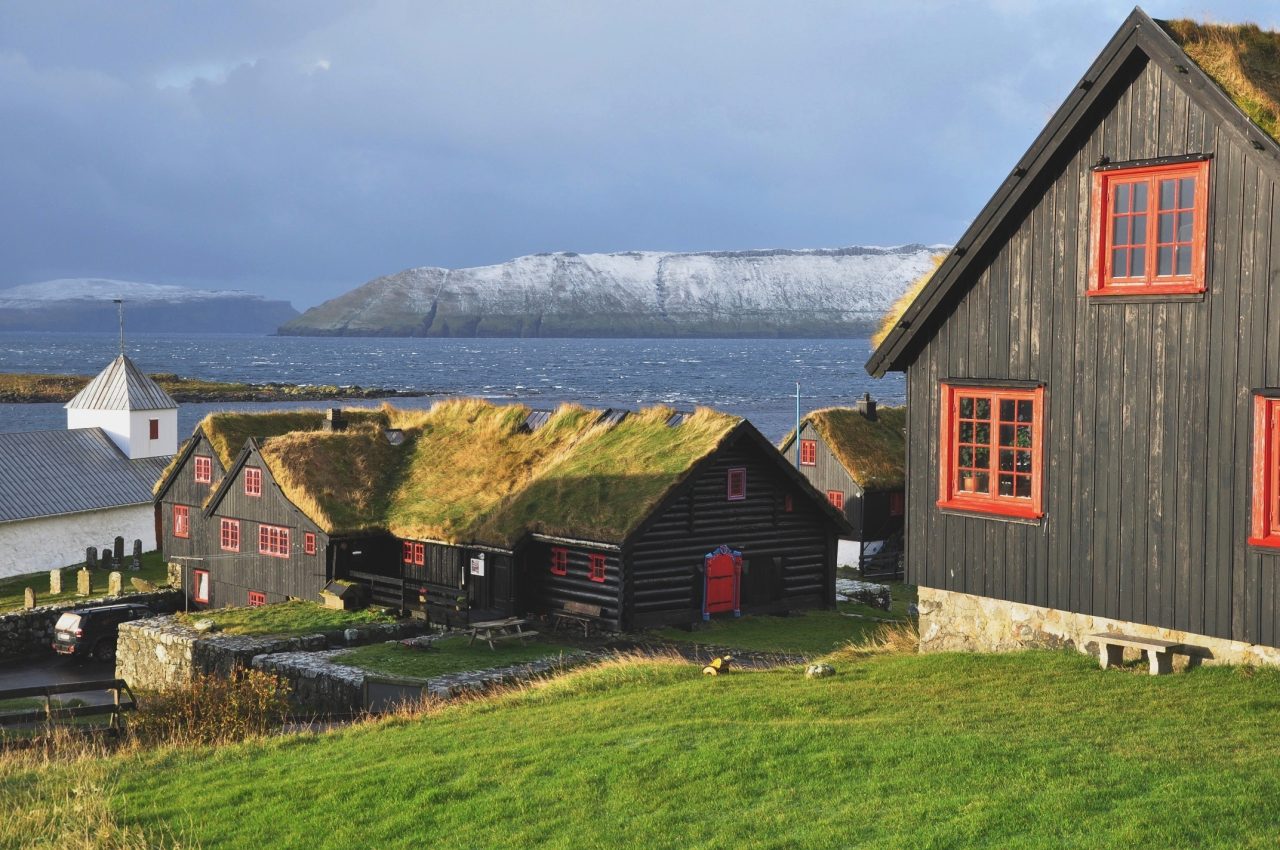
The village of Kirkjubøur with its central building Kirkjubøargarður (also called Roykstovan), the world’s oldest still inhabited wooden house, from the 11th century. Sverre I of Norway was one of notable people who lived here for a period. Photo by Vincent van Zeijst, CC BY-SA 3.0
Sometime after his victory at the Battle of Kalvskinnet in 1179, near Trondheim, Norway, King Sverre Sigurdsson (1151-1202), in the second year of his tenuous reign, beckoned an Icelandic abbot named Karl Jonssen, of the Tingeyre (Þingeyri) monastery, in the windswept coast of northwest Iceland, to chronicle his life and ensure his story would prevail through the ages.
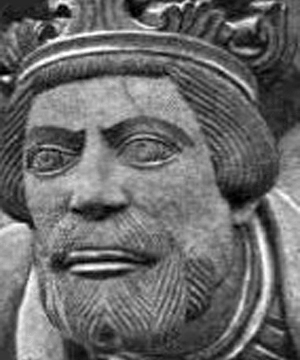
In a 1914 preface of the Sverres Saga, Gustav Storm – an esteemed professor of medieval Viking literature and history at Christiania’s Royal Frederick University – noted that the abbot…
…only carried the pen; the real author is King Sverre himself. It is stated in the preface: “And it is the first part of the book, which is written after the book, which Abbot Karl Jonssen first wrote, but King Sverre himself sat over him and advised what was to be written.” It is this that Sverre himself has had a part in the saga, which makes it historically so valuable and literally so life-giving and captivating. Around the saga we notice Sverre’s bright and clear spirit… whimsical and wide, and in many places – not just in the speeches – we think we carry his own words. It seems as if Abbot Karl has often only written down after Sverre’s dictation.[1]
Birth Legend and Mother’s Confession
That King Sverre would embellish his legacy would be expected of any saga, but his rise to power was no small feat given his birth in Norway and humble upbringing in the Faroes – the far-flung islands located between Norway and Iceland.
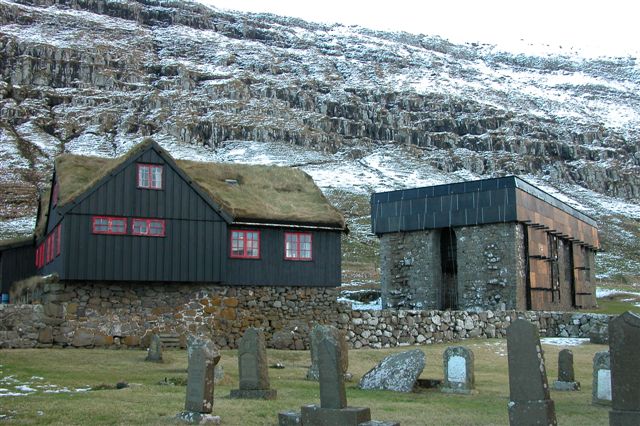
According to the Sverres Saga, legend surrounded the event of his birth to Unaas and Gunnhild. Shortly before his coming into the world, his mother began having remarkable dreams – one where Gunnhild’s midwife exclaimed upon Sverre’s arrival: “‘You have brought forth a wonderful and awful birth.’” This was not said once, but “three times she cried with the same words” – which prompted Gunnhild to ask what exactly she had birthed:
…it was a stone, very large and covered with snow-white light, but it shone so strongly that it sparkled everywhere as of a glowing jem, like when one blows on white iron in a forge. But she then said… Let us hide this birth carefully, so that no one may see it, for it will seem strange to most who see it… the two took the stone and left it in a chair and blanketed it with a beautiful cloth. But when they had covered the stone, sparks flew everywhere through the cloakroom and around the attic.[2]
In the fourth winter of his life, Sverre was sent to the Faroes to be educated at King’s Farm (Kirkjubøargarður) in Kirkjubøur by a bishop named Roe, “who fostered and fattened him. The bishop put him to the book and gave him rites, so that he was ordained a priest.” However, a religious life was not suited for him, and one day he beat a man after a quarrel. Like his mother, Sverre too was affected by dreams.[3]
Around 1175, in the twenty-fourth year of Sverre’s life, his mother embarked on a pilgrimage to Rome where she confessed that Sverre “had a different father than has been hitherto said, and that his father was a king, but it was hidden from the son.” When the matter was brought before the Pope, it was “commanded… that she should let her son know his true blood lineage as soon as she found him.” After returning to Norway, she “went out to the Faroes and told Sverre that he was King Sigurd’s son.” This knowledge set Sverre on his destined path.[4]
The Death of King Sigurd Munn and Civil War in Norway
Sigurd II Haraldsson, also known as King Sigurd Munn, Sverre’s alleged father, was murdered in 1155 launching “The Brothers’ War.” However, before his demise he attempted to make peace in Bergen with his brothers Inge “Krokrygg” Haraldsson and Eystein Haraldsson.
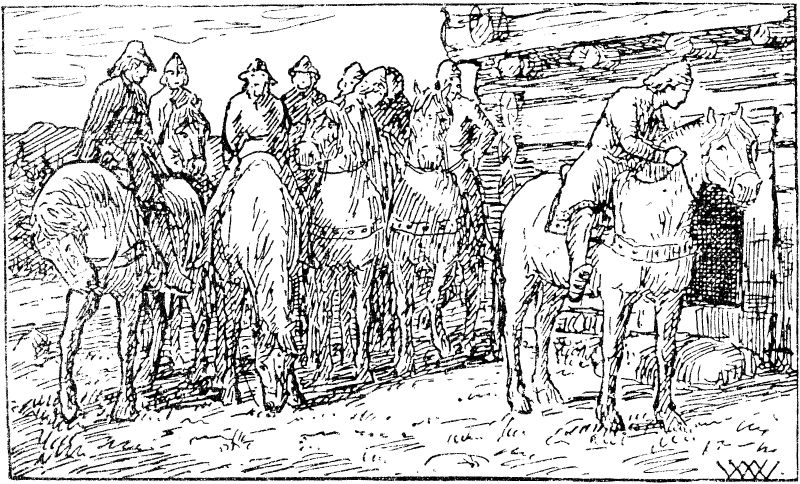
Rather than compromise, Inge ordered his brother’s death – exacerbating an ongoing civil war between illegitimate sons and pretenders of the powerful but heirless King Sigurd the Crusader, who died in 1130. The Heimskringla records Sigurd’s ambush and demise at a residence in Bergen:
King Sigurd sat and drank in Sigrid Saeta’s house ready for battle, although people thought it would not come to an assault at all. Then came King Inge with his men down the road from the smithy shops, against the house… King Sigurd and his men made many shots from the holes in the loft, broke down the fireplaces, and threw stones on them… They hewed down the houses, and many of King Sigurd’s men left him, and surrendered for quarter. Then King Sigurd went up into a loft, and desired to be heard. He had a gilt shield, by which they knew him; but they would not listen to him, and shot arrows at him as thick as snow in a snow-shower, so that he could not stay there. As his men had now left him, and the houses were being hewn down, he went out from thence, and with him his court-man Thord Husfreyja from Viken. They wanted to come where King Inge was to be found; and Sigurd called to his brother King Inge, and begged him to grant him life and safety; but both Thord and Sigurd were instantly killed, and Thord fell with great glory.[5]
Eystein was killed two years later, and detractors of Inge made Haakon II Sigurdsson king, but he reigned for merely five years before being slain at the Battle of Sekken in 1162 – one year after Inge was killed in battle.
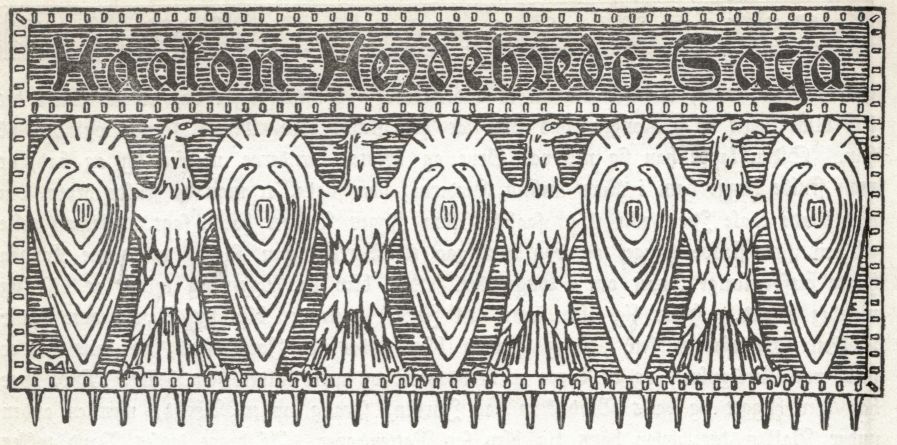
Thus when Haakon was dead, Magnus Erlingsson, son of a powerful earl named Erling Skakke, was named king in 1161 at age five by Inge’s supporters – becoming the one true king of Norway. News of The Brothers’ War spread far and wide, and for that reason, when Sverre learned that he was Sigurd’s son, and held a claim to the throne, “it dawned on him, as if the holy King [Saint] Olav had fought against King Magnus and Earl Erling [Skakke], and as if he were thinking of which of them he should seek.” Whether or not to stay in the Faroes and live in obscurity, or return to his father’s homeland to achieve glory or death, was a difficult decision, but “he was strengthened” by a dream. In it, King Olaf, also known as Saint Olaf, who was canonized and venerated with the title “perpetual king” shortly after his death at the Battle of Stiklestad in 1030, appeared and…
…took his sword and handed it to this young man Sverre, and then he gave him his mark in his hand and said: “Now accept the mark, and think to yourself that you will still carry this mark hereafter.” He seemed to receive the mark, but with some fear. Now the king took his shield, and they [the enemies of Magnus and Erling Skakke] all went out very hastily… Then they came on open land and on a beautiful void. Then he seemed to raise the mark and carry it against the county of King Magnus and Earl Erling… Then he woke up and thought about his dream… Sverre now got ready to go to Norway to see what he should do.[6]
[1] Gustav Storm and Alexander Bugge, ed. Norges Kongesagaer III: Sverres Saga (Kristiania: I.M. Sternersens Forlag, 1914), ii.
[2] Ibid. 3-4.
[3] Ibid. 4.
[4] Ibid. 5.
[5] Samuel Laing, The Heimskringla or the Sagas of the Norse Kings From the Icelandic of Snorre Sturlason, vol. 4(New York: Scribner & Welford, 1889), 257.
[6] Storm and Bugge, ed. Norges Kongesagaer III: Sverres Saga, 6-7.
About the author
Benjamin J. Swenson is an assistant professor at Hoseo University in Asan, South Korea. He holds a PhD from Pompeu Fabra University in Barcelona, Spain, where his dissertation addressed Euro-American military history and the advent of guerrilla warfare and counterinsurgency doctrine in the nineteenth century. His work has recently appeared in the Journal of Military History, and his latest, The Dawn of Guerrilla Warfare, will be published by UK’s Pen & Sword in 2023. His hobbies include Viking sagas and chess.